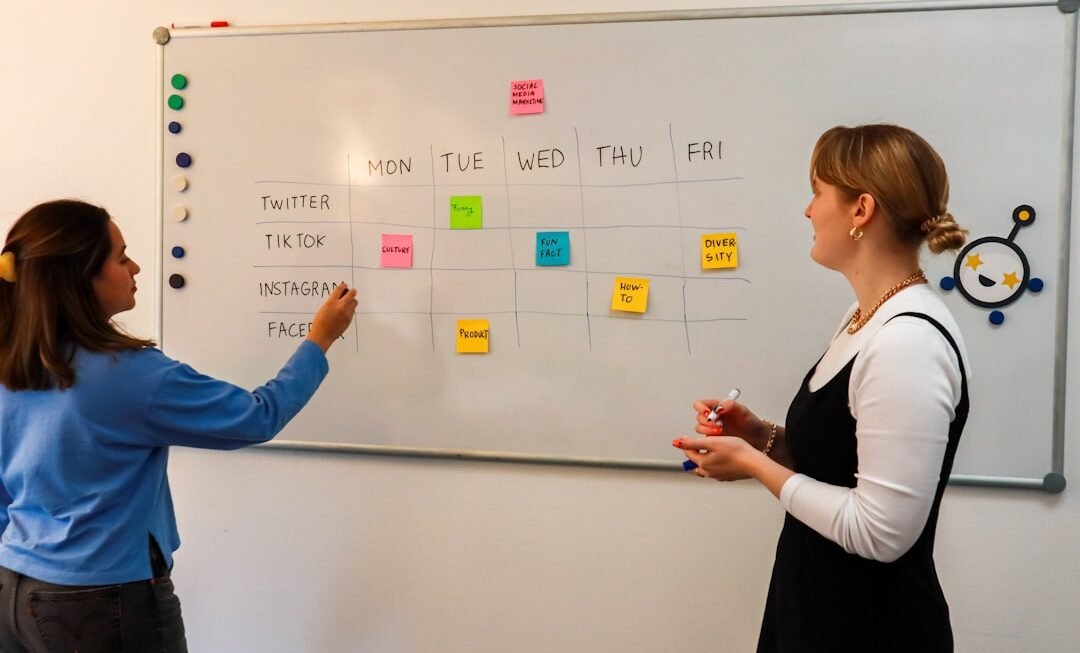In recent years, the educational landscape has undergone a significant transformation, driven by the integration of gamification and artificial intelligence (AI) technologies. Gamification refers to the application of game-design elements in non-game contexts, particularly in education, to enhance engagement and motivation among learners. This approach leverages the inherent appeal of games—such as competition, rewards, and challenges—to create a more interactive and enjoyable learning experience.
On the other hand, AI technologies encompass a range of tools and systems that can analyze data, adapt content, and provide personalized feedback, thereby enhancing the learning process. Together, these two elements have the potential to revolutionize how education is delivered and experienced. The convergence of gamification and AI in learning environments is not merely a trend; it represents a paradigm shift in educational methodologies.
As educators seek innovative ways to engage students, gamified learning experiences powered by AI can offer tailored pathways that cater to individual learning styles and paces. This synergy not only fosters a more dynamic classroom atmosphere but also equips learners with essential skills for the 21st century, such as critical thinking, problem-solving, and collaboration. By understanding the interplay between gamification and AI technologies, educators can harness their combined strengths to create more effective and engaging learning experiences.
Key Takeaways
- Gamification and AI technologies are revolutionizing the way we approach learning and education.
- Gamification in education has been shown to improve student engagement, motivation, and knowledge retention.
- AI technologies play a crucial role in enhancing gamified learning by personalizing the experience for each student.
- Examples of gamified learning platforms powered by AI include Duolingo, Kahoot, and Brainly.
- AI personalizes learning experiences in gamified environments by adapting content and difficulty levels to individual student needs.
The Benefits of Gamification in Education
Gamification in education offers numerous benefits that extend beyond mere entertainment. One of the most significant advantages is its ability to increase student engagement. Traditional teaching methods often struggle to capture the attention of students who are accustomed to the instant gratification provided by video games and digital media.
By incorporating game-like elements such as points, badges, and leaderboards, educators can create a more stimulating environment that encourages active participation. For instance, platforms like Kahoot! allow teachers to create interactive quizzes that transform assessment into a competitive game, making learning more enjoyable and less intimidating.
Moreover, gamification promotes intrinsic motivation among learners. When students are rewarded for their efforts through achievements or progress tracking, they are more likely to develop a sense of ownership over their learning journey. This intrinsic motivation can lead to improved persistence and resilience in the face of challenges.
For example, Duolingo, a language-learning app, employs gamification techniques by offering daily goals, streaks, and rewards for completing lessons. This approach not only motivates users to practice regularly but also fosters a sense of accomplishment as they progress through different levels of language proficiency.
The Role of AI Technologies in Enhancing Gamified Learning
AI technologies play a crucial role in enhancing gamified learning experiences by providing adaptive learning pathways tailored to individual student needs. Through data analysis and machine learning algorithms, AI can assess a learner’s strengths and weaknesses in real-time, allowing for personalized content delivery. This adaptability ensures that students are neither bored with material that is too easy nor overwhelmed by content that is too challenging.
For instance, platforms like Smart Sparrow utilize AI to create adaptive elearning environments where students receive customized feedback based on their interactions with the material. Additionally, AI can facilitate the creation of intelligent tutoring systems that simulate one-on-one instruction. These systems can analyze student performance data to identify areas where additional support is needed and provide targeted interventions accordingly.
For example, Carnegie Learning’s MATHia software uses AI to adaptively guide students through math problems while offering hints and explanations tailored to their specific misunderstandings. This level of personalization not only enhances comprehension but also aligns with the principles of gamification by providing immediate feedback and rewards for progress.
Examples of Gamified Learning Platforms Powered by AI
Several innovative platforms exemplify the successful integration of gamification and AI technologies in education. One notable example is Classcraft, an educational role-playing game that transforms classroom dynamics into an immersive adventure. In Classcraft, students create avatars and earn experience points for positive behaviors and academic achievements.
The platform employs AI algorithms to track student progress and adapt challenges based on individual performance levels, ensuring that each learner is appropriately challenged while remaining engaged. Another prominent example is Prodigy Math, an adaptive math platform designed for students in grades 1-8. Prodigy combines gamification elements such as quests, battles, and rewards with AI-driven assessments that adapt in real-time to each student’s skill level.
As students progress through the game, they encounter math problems that align with their current curriculum while receiving instant feedback on their performance. This dual approach not only reinforces mathematical concepts but also keeps learners motivated through an engaging gaming experience.
How AI Personalizes Learning Experiences in Gamified Environments
The personalization of learning experiences through AI technologies is one of the most compelling aspects of gamified education. By analyzing vast amounts of data from student interactions, AI can identify patterns in learning behaviors and preferences. This information allows educators to tailor content delivery in ways that resonate with individual learners.
For instance, if a student consistently struggles with specific math concepts, an AI-powered platform can adjust the difficulty level or provide additional resources focused on those areas. Furthermore, AI can facilitate differentiated instruction within gamified environments by offering various pathways for mastery. For example, if a student excels in certain subjects but struggles in others, the system can provide advanced challenges in areas of strength while offering remedial support where needed.
This level of customization not only enhances learning outcomes but also fosters a growth mindset among students as they see tangible progress tailored to their unique abilities.
The Impact of Gamification and AI on Student Engagement and Motivation
The combination of gamification and AI has a profound impact on student engagement and motivation levels. Research has shown that when students are actively involved in their learning process through game-like experiences, they are more likely to retain information and develop a deeper understanding of the material. The interactive nature of gamified learning encourages exploration and experimentation, allowing students to take risks without fear of failure.
Moreover, the immediate feedback provided by AI technologies reinforces positive behaviors and achievements within gamified environments. When students receive instant recognition for their efforts—whether through points earned or badges awarded—they are more likely to remain motivated and committed to their learning goals. This continuous cycle of feedback and reward creates an environment where students feel empowered to take ownership of their education, leading to increased persistence and improved academic performance.
Overcoming Challenges in Implementing Gamification and AI in Education
Despite the numerous benefits associated with gamification and AI in education, several challenges must be addressed for successful implementation. One significant hurdle is the potential resistance from educators who may be unfamiliar with these technologies or skeptical about their effectiveness. Professional development programs focused on training teachers in the use of gamified platforms and AI tools are essential for overcoming this barrier.
By equipping educators with the necessary skills and knowledge, schools can foster a culture of innovation that embraces new teaching methodologies. Another challenge lies in ensuring equitable access to technology for all students. Disparities in access to devices or reliable internet connections can hinder the effectiveness of gamified learning experiences powered by AI.
To address this issue, educational institutions must prioritize investments in technology infrastructure while also exploring alternative solutions such as offline capabilities or mobile-friendly platforms that can reach underserved populations.
The Future of Gamified Learning with AI Technologies
Looking ahead, the future of gamified learning powered by AI technologies appears promising as advancements continue to reshape educational practices. As machine learning algorithms become more sophisticated, we can expect even greater levels of personalization within gamified environments. Future platforms may leverage predictive analytics to anticipate student needs before they arise, allowing for proactive interventions that enhance learning outcomes.
Additionally, the integration of virtual reality (VR) and augmented reality (AR) into gamified learning experiences could further elevate engagement levels. Imagine students exploring historical events through immersive VR simulations or conducting science experiments in AR-enhanced environments—all while benefiting from personalized feedback driven by AI algorithms. Such innovations have the potential to create truly transformative educational experiences that captivate learners’ imaginations.
Ethical Considerations in Gamification and AI in Education
As with any technological advancement, ethical considerations surrounding gamification and AI in education must be carefully examined. One primary concern is data privacy; educational platforms often collect vast amounts of personal information from students to tailor experiences effectively. It is crucial for developers and educators to prioritize transparency regarding data usage while implementing robust security measures to protect sensitive information.
Moreover, there is a risk that excessive reliance on gamification could lead to superficial engagement rather than genuine learning experiences. Educators must strike a balance between leveraging game mechanics for motivation while ensuring that educational objectives remain at the forefront of instructional design. By fostering critical thinking skills alongside gamified elements, educators can create meaningful learning experiences that extend beyond mere entertainment.
Best Practices for Integrating Gamification and AI in Learning
To effectively integrate gamification and AI into educational settings, several best practices should be considered. First and foremost, educators should begin by clearly defining learning objectives before implementing any gamified elements or AI tools. This clarity ensures that all activities align with desired outcomes while providing a framework for assessing student progress.
Additionally, collaboration among educators is essential for sharing insights and strategies related to gamification and AI implementation. Professional learning communities can serve as valuable platforms for exchanging ideas, troubleshooting challenges, and celebrating successes within this innovative approach to education. Finally, continuous evaluation of both student engagement levels and academic performance is vital for refining gamified experiences over time.
By gathering feedback from learners regarding their experiences with gamified platforms powered by AI technologies, educators can make informed adjustments that enhance overall effectiveness.
The Potential of Gamification and AI to Transform Education
The integration of gamification and AI technologies holds immense potential for transforming education into a more engaging, personalized experience for learners across diverse backgrounds. By harnessing the motivational power of games alongside the adaptive capabilities of artificial intelligence, educators can create dynamic learning environments that cater to individual needs while fostering critical skills essential for success in an increasingly complex world. As we continue to explore innovative approaches within education through these technologies, it is imperative that we remain mindful of ethical considerations while prioritizing equitable access for all students.
With thoughtful implementation strategies grounded in best practices, the future of gamified learning powered by AI promises not only enhanced engagement but also meaningful educational outcomes that prepare learners for lifelong success.












